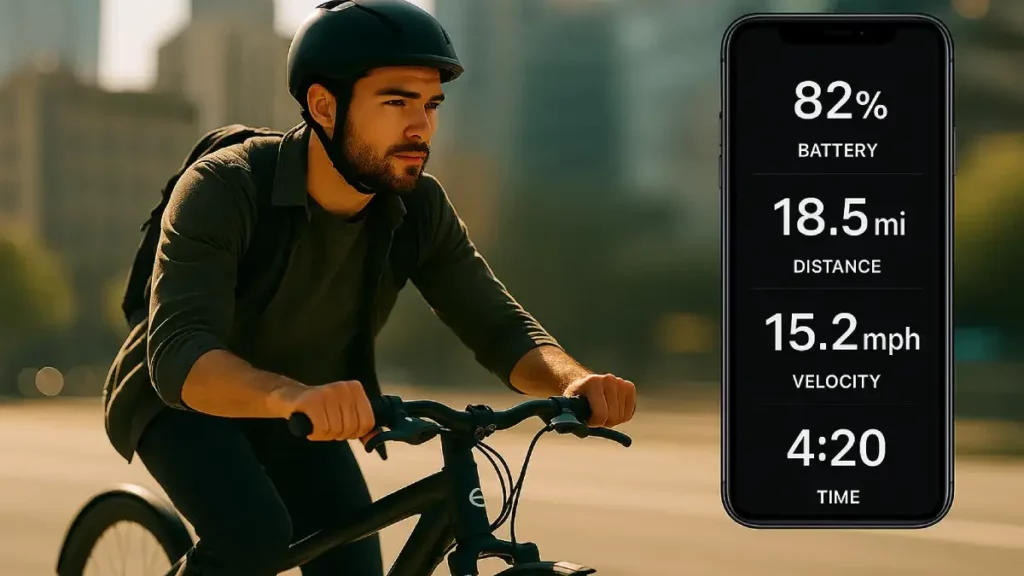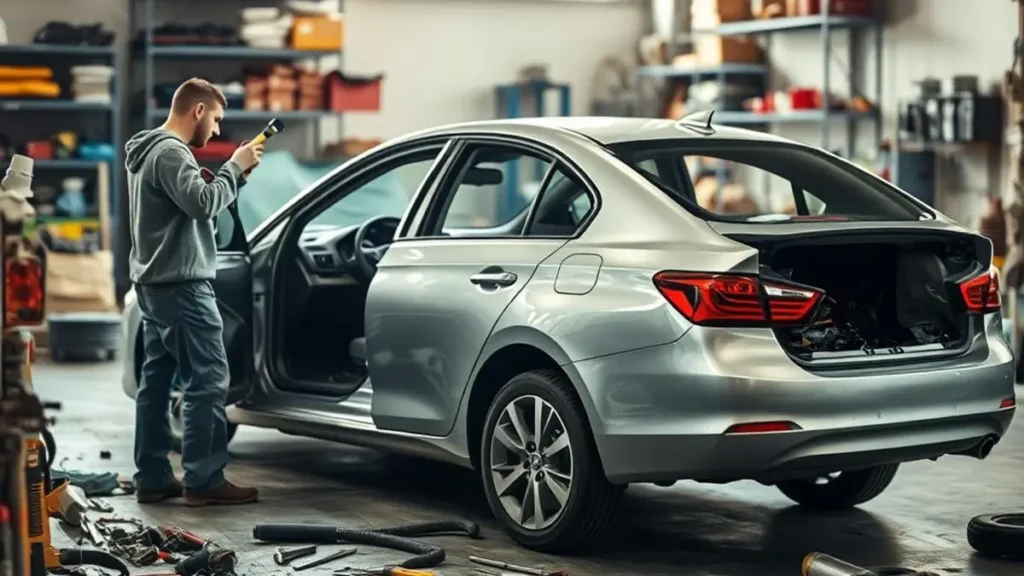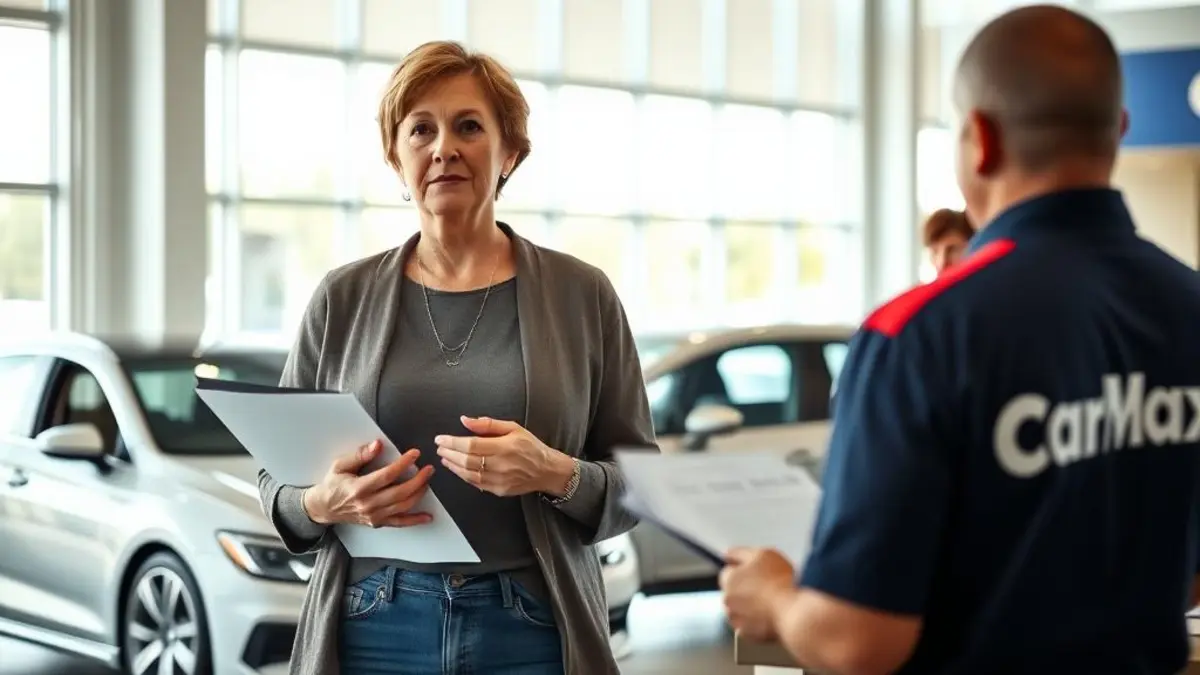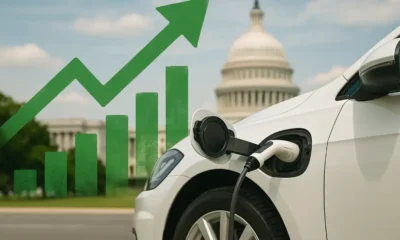Best Electric Bikes for Urban Commuting & Sustainable Transport
Best Electric Bikes for Urban Commuting & Sustainable Transport
Estimated Reading Time: 18 minutes
Key Takeaways
- Faster & Greener Commutes: Electric bikes (e-bikes) significantly speed up urban journeys, easily handle hills, reduce sweat, and offer a major sustainable transport advantage over cars.
- Types for Needs: Key categories include durable Commuter e-bikes for daily rides, portable Folding e-bikes for mixed commutes/small spaces, versatile City/Hybrid models, and heavy-duty Cargo e-bikes.
- Essential Features: Prioritize battery range (match to commute distance), motor type (mid-drive for hills, hub for flats), frame design (step-through for ease), weight (if lifting), hydraulic disc brakes (for safety), and comfort elements.
- Top Contenders: Notable models include the stylish Lectric ONE, lightweight Specialized Turbo Vado SL, reliable Gazelle Medeo T9, user-friendly Trek Verve+, affordable Lectric XP Lite folder, and ultra-compact Brompton Electric.
- Practical Ownership: Good locks, basic maintenance (tires, brakes, chain, battery care), appropriate gear for weather, and understanding local e-bike laws are crucial for a smooth commuting experience.
- Test Rides Matter: Always test ride potential e-bikes to check fit, comfort, motor feel, handling, and ease of use before making a purchase decision.

Table Of Contents
- Introduction: The Electric Bike Revolution
- Why Electric Bikes Have Become Game-Changers for City Travel
- Understanding E-Bike Categories for Urban Riders
- Essential Features to Look for in the Best Electric Bikes
- In-Depth Reviews: Top Commuter E-Bikes for 2023
- Best Folding Electric Bikes for Mixed Commutes
- How Electric Bikes Support Sustainable Transportation Goals
- Practical Considerations for New E-Bike Commuters
- Making Your Decision: How to Choose the Right Electric Bike
- Conclusion: Embracing the Electric Bike Movement
- Additional Resources Section
- FAQ
Introduction: The Electric Bike Revolution
Have you noticed more bikes zipping around your city lately, often faster and with less effort than traditional bikes? You’re seeing the electric bike revolution in action! These amazing machines, also known as e-bikes, are quickly changing how people get around in towns and cities.
More and more people are choosing electric bikes for their daily travel. Some studies show sales growing incredibly fast each year. Why? Because e-bikes make urban commuting much easier and are a fantastic form of sustainable transport. They help you get where you need to go faster, without getting too sweaty, and they are much better for our planet than cars. For more on sustainable technologies, check out this article on sustainable tech for a greener future.
This article is your guide to finding the best electric bikes for city life. We’ll look at different types, like sturdy commuter e-bikes and handy folding e-bikes. We want to help you choose the perfect electric bicycle for your daily trips. Let’s find the best electric bikes to make your commute better!
Why Electric Bikes Have Become Game-Changers for City Travel
Electric bikes and urban commuting are a perfect match. Cities can be busy, with lots of traffic. E-bikes offer a smart way to navigate the urban jungle, making them ideal for daily travel and supporting sustainable transport goals.
Here’s why e-bikes are changing the game for city travel:
- Get There Faster: E-bikes have a small electric motor that helps you pedal. This means you can travel faster than on a regular bike, often averaging 15-20 mph (24-32 km/h) with less effort. Hills feel easier, and headwinds are less of a problem.
- Beat the Traffic: Zip past cars stuck in traffic jams! E-bikes can often use bike lanes and shortcuts that cars can’t access. This means your arrival time is more predictable.
- Save Money: Think about the costs of owning a car (gas, insurance, parking, repairs) or paying for buses and trains every day. E-bikes cost much less to run. Charging the battery costs pennies, and maintenance is generally cheaper than car repairs. For example, a monthly transit pass might cost $100, while charging an e-bike might cost only $5-$10 per month, plus occasional maintenance. You can also discover more ways to boost your home energy efficiency and save money, similar to the savings e-bikes offer.
- Stay Healthy, Arrive Fresh: You still pedal on an e-bike, so you get good exercise. Studies show this kind of moderate activity is great for your health. But the electric assist means you won’t arrive at work dripping in sweat. You get the health benefits without the hassle.
- Go Green: Choosing an e-bike is a vote for sustainable transport. E-bikes produce zero tailpipe emissions. Compared to a car journey, an e-bike trip drastically reduces your carbon footprint, helping to make city air cleaner.
- City Support: Many cities are building more bike lanes and paths, making e-biking safer and more convenient. Some cities even offer programs to encourage people to buy e-bikes.
Recent research highlights how electric bikes significantly cut down commute times in busy urban areas, making them a practical and enjoyable choice.
“Imagine reclaiming minutes, even hours, from your commute each week, all while getting gentle exercise and enjoying the city sights – that’s the power of an e-bike.”
Understanding E-Bike Categories for Urban Riders
Not all e-bikes are the same. Different types are designed for different needs. For city riders, the main categories are commuter e-bikes and folding e-bikes, but others might also be useful.
Let’s look at the main types of electric bicycles for city use:
- Commuter E-bikes: These are built specifically for daily travel in the city.
- Definition: Think of them as reliable workhorses. They usually have strong frames, comfortable seats, and features needed for commuting like built-in lights (so you can see and be seen), fenders (to keep mud and water off you), and racks (to carry bags or groceries).
- Best for: People with medium to long daily commutes who need a durable and comfortable ride. If you rely on your bike every day, rain or shine, a commuter e-bike is often the best choice.
- Folding E-bikes: These bikes are designed to fold up small.
- Definition: Their main advantage is portability. They can be folded down quickly to fit under a desk, in a car trunk, or on a train or bus.
- Best for: People living in small apartments with limited storage space. They are also perfect for “mixed-mode” commuting – maybe you ride to the train station, fold the bike, take the train, and then unfold it to ride the last mile to work.
- City/Hybrid E-bikes: These are versatile all-rounders.
- Definition: They blend features of road bikes and mountain bikes, suitable for paved streets but also capable on park paths or gravel trails. They often have a comfortable, upright riding position.
- Best for: Riders who want one e-bike for commuting during the week and leisure rides on the weekend.
- Cargo E-bikes: These are the heavy lifters of the e-bike world.
- Definition: They have extended frames and sturdy racks, often at the front or back, designed to carry large or heavy loads – like groceries, packages, or even children.
- Best for: Families who want to replace a second car, small business owners making local deliveries, or anyone who needs to regularly carry bulky items.
Understanding these categories helps you narrow down which type of e-bike best fits your city lifestyle and commuting needs.
Essential Features to Look for in the Best Electric Bikes
Choosing the best electric bikes involves looking at some key features. Understanding these parts will help you find an e-bike perfect for your urban commuting needs. Don’t worry, we’ll explain them simply!
- Battery Range and Capacity:
- What it means: The battery powers the motor. Capacity is measured in Watt-hours (Wh). More Wh generally means more range – how far you can ride on one charge.
- What to look for: Think about your daily round trip distance. For short commutes (under 10 miles / 16 km), a 300-400 Wh battery might be enough. For longer commutes (20+ miles / 32+ km), look for 500 Wh or more. Remember, factors like hills, rider weight, and assist level affect actual range. Always aim for a bit more range than you think you need.
- Motor Types and Power:
- What it means: The motor gives you the electric boost. Power is measured in Watts (W). There are two main types:
- Hub Motors: Located in the center of the front or rear wheel. They are often simpler and more affordable. Good for flatter areas.
- Mid-Drive Motors: Located in the middle of the bike, near the pedals. They feel more natural, like regular biking but easier, and are generally better for climbing hills.
- What to look for: For mostly flat city riding, a 250W or 350W hub motor is usually fine. If your commute includes steep hills, a mid-drive motor or a more powerful hub motor (500W+) might be better.
- What it means: The motor gives you the electric boost. Power is measured in Watts (W). There are two main types:
- Frame Materials and Design:
- What it means: The frame is the bike’s skeleton. Common materials are:
- Aluminum: Most common, good balance of strength, weight, and cost.
- Carbon Fiber: Much lighter but more expensive.
Frame designs include:
- Traditional (Diamond) Frame: Has a high top tube you step over. Often stronger and lighter.
- Step-Through Frame: Has a low or no top tube, making it easier to get on and off, especially in stop-start city traffic or if wearing skirts or less flexible clothing.
- What to look for: Choose based on budget and ease of use. Step-through frames are very popular for urban commuting.
- What it means: The frame is the bike’s skeleton. Common materials are:
- Weight Considerations:
- What it means: E-bikes are heavier than regular bikes due to the battery and motor, often weighing 40-70 lbs (18-32 kg).
- What to look for: If you need to carry your bike up stairs to your apartment or office, or lift it onto a car rack, pay close attention to the weight. Folding e-bikes are generally lighter, but performance e-bikes can also be surprisingly light (and expensive).
- Braking Systems:
- What it means: Good brakes are crucial for safety in the city.
- What to look for: Hydraulic disc brakes offer the best stopping power and control in all weather conditions (wet or dry). They are ideal for the frequent stops and starts of urban commuting. Mechanical disc brakes are good too, while rim brakes are less common on quality e-bikes today and perform worse in wet weather.
- Smart Features:
- What it means: Some e-bikes connect to smartphone apps for things like tracking rides, adjusting settings, navigation, or even locking the motor remotely for theft protection.
- What to look for: These are nice-to-haves. Decide if features like GPS tracking or integrated navigation are important for your peace of mind and convenience. For a deeper dive into smart home tech and how it enhances modern living, you might find this guide useful.
- Comfort Features:
- What it means: Things that make the ride smoother and more pleasant.
- What to look for: Suspension (front fork or seat post) can absorb bumps from potholes or uneven roads. Ergonomic grips and a comfortable saddle make a big difference on daily rides. An upright riding posture is often preferred for city visibility and comfort.
Simple Decision Framework:
- My Commute: How far? Hilly or flat?
- Carrying/Storage: Do I need to lift it often? Where will I store it? (Consider folding or lighter weight)
- Budget: How much can I spend upfront? (Remember long-term savings)
- Must-Haves: What features are essential? (e.g., range, carrying capacity, ease of getting on/off)
- Nice-to-Haves: What extra features would I like? (e.g., smart connectivity, specific style)
Thinking through these points will help you prioritize features when looking at the best electric bikes.
In-Depth Reviews: Top Commuter E-Bikes for 2023
Finding the best electric bikes means looking closely at specific models. Here are some top-rated commuter e-bikes known for performance and reliability in urban commuting. These bike reviews cover key details to help you compare. (Note: Prices are approximate ranges and can vary).
1. Lectric ONE
- Price Range: $1,999 – $2,199
- Key Specs:
- Motor: 750W Peak Rear Hub Motor
- Battery: 500Wh Integrated Battery
- Range: Up to 60 miles (96 km) stated
- Weight: Approx. 55 lbs (25 kg)
- Unique Selling Points: Features a striking vintage-inspired look that stands out. Comes with a powerful motor for quick acceleration, which is great for city traffic. An interesting option is a sidecar attachment for carrying cargo or even a small passenger, adding unique versatility. Includes advanced features like a Pinion gearbox and Gates carbon belt drive for low maintenance.
- Best Suited For: Riders who value style and want a powerful, versatile bike for various urban tasks. Good for those who appreciate low-maintenance components.
- Limitations: Availability might be limited in some areas. The bike is fairly heavy, and adding the sidecar increases weight and bulk significantly.
- Source
2. Specialized Turbo Vado SL
- Price Range: $3,500 – $5,500 (depending on model variation ‘4.0’ or ‘5.0’)
- Key Specs:
- Motor: Specialized SL 1.1 Mid-Drive Motor (35Nm torque, 240W peak)
- Battery: 320Wh Integrated Battery (Range Extender available)
- Range: Up to 80 miles (128 km) with internal battery, more with extender
- Weight: Remarkably light, around 33 lbs (15 kg) for some models
- Unique Selling Points: Exceptionally lightweight for an e-bike, making it easy to handle and carry. Offers a smooth, natural-feeling assist from the proprietary SL motor. Features integrated lights and options for racks/fenders. Known for its impressive range, especially with the optional Range Extender battery. Smart connectivity via Specialized Mission Control app.
- Best Suited For: Longer-distance commuters looking for a high-performance, lightweight e-bike that feels very much like a regular bicycle, just faster and easier. Ideal for those who may need to lift their bike occasionally.
- Limitations: Comes with a premium price tag. Maintenance might require visiting shops familiar with Specialized systems. Less raw power than some heavier hub-motor bikes on very steep hills.
- Source (Implied reference [11])
3. Gazelle Medeo T9 HMB
- Price Range: $2,500 – $3,000
- Key Specs:
- Motor: Bosch Active Line Plus Mid-Drive Motor (50Nm torque)
- Battery: 400Wh Bosch PowerTube Battery
- Range: Up to 60 miles (96 km) estimated
- Weight: Around 50 lbs (23 kg)
- Unique Selling Points: Uses a very reliable and smooth Bosch mid-drive motor system, known for quality. Offers a comfortable, upright riding position perfect for navigating city streets safely. Comes fully equipped with integrated lights, fenders, a sturdy rear rack, and a frame lock. Excellent build quality typical of the Gazelle brand.
- Best Suited For: Daily commuters who prioritize comfort, reliability, and ease of use over raw speed or lightweight design. Great for riders who want a bike that’s ready to go right out of the shop.
- Limitations: Doesn’t have a throttle option (pedal-assist only). It’s a bit heavier than some performance-oriented commuter e-bikes.
- Source
4. Trek Verve+ 3 Lowstep
- Price Range: $2,800 – $3,100
- Key Specs:
- Motor: Bosch Active Line Plus Mid-Drive Motor (50Nm torque)
- Battery: 400Wh or 500Wh Bosch PowerTube Battery options
- Range: Up to 75 miles (120 km) depending on battery and conditions
- Weight: Around 52 lbs (23.6 kg)
- Unique Selling Points: Features a user-friendly design, especially the “Lowstep” frame which is very easy to get on and off. Equipped with Bosch Purion controller which is simple to operate. Provides a balanced and stable ride feel. Comes with essential commuting accessories like lights, fenders, and a rear rack. Suspension seatpost adds extra comfort.
- Best Suited For: New e-bike riders or commuters looking for a comfortable, dependable, and easy-to-use electric bike from a well-known brand. The lowstep frame is particularly good for city riding.
- Limitations: Uses the same reliable but moderately powered Bosch Active Line Plus motor as the Gazelle, so it might feel less punchy on very steep inclines compared to bikes with more powerful motors.
- Source Needed – Suggest Trek Bicycle website for Verve+ 3
These bike reviews highlight some of the best electric bikes designed for commuter use, offering different strengths for various urban commuting styles and budgets.
Best Folding Electric Bikes for Mixed Commutes
For commuters needing maximum portability, folding e-bikes are the answer. These compact electric bikes are perfect for combining cycling with public transport or storing in tight spaces. Here are some top bike reviews for folding e-bikes suitable for urban commuting.
1. PXID-A1
- Price Range: $600 – $800 (Estimate, check specific retailers)
- Key Specs:
- Folded Dimensions: Approx. 30″ x 16″ x 26″ (Estimate, varies slightly)
- Weight: Around 45-50 lbs (20-23 kg)
- Motor: 250W or 350W Hub Motor (Typical for category)
- Range: Typically 20-30 miles (32-48 km)
- Unique Selling Points: Often features a very compact fold, making it highly portable. Usually includes an informative LCD display showing speed, battery level, and distance. Designed to be user-friendly and convenient for hopping on and off public transport. Generally quite affordable.
- Best Suited For: Commuters who heavily rely on mixing cycling with bus or train travel. Excellent for those living in small apartments or needing to store their bike indoors at work due to limited space.
- Limitations: Smaller wheels (often 16″ or 20″) can provide a bumpier ride compared to full-size bikes and may struggle with large potholes. Motor power and range are usually suitable for urban flats but limited for hills or very long distances. Build quality can vary at lower price points.
- Source Needed – Suggest manufacturer website or major retailer page for PXID-A1 (Implied reference [12])
2. Lectric XP Lite
- Price Range: $799 – $899
- Key Specs:
- Folded Dimensions: 36″ L x 16″ W x 27″ H
- Weight: 46 lbs (21 kg)
- Motor: 300W Rear Hub Motor (720W Peak)
- Range: Up to 40 miles (64 km) stated (using pedal assist)
- Unique Selling Points: One of the most affordable and popular folding e-bikes on the market. Very lightweight for a folding e-bike at this price point. Offers a decent range and surprising pep from its motor. Comes in several bright color options. Simple, single-speed drivetrain is easy to maintain.
- Best Suited For: Budget-conscious riders looking for a simple, lightweight, and versatile folding electric bike for shorter city commutes and errands. Great entry point into the e-bike world.
- Limitations: Single-speed means it’s less versatile on hills (though the motor helps). Has fewer premium features compared to more expensive models (e.g., simpler display, mechanical brakes on some versions). Basic suspension means you’ll feel bumps more.
- Source (Implied reference [18])
3. Brompton Electric C Line
- Price Range: $3,800 – $4,500
- Key Specs:
- Folded Dimensions: Exceptionally small, approx. 23″ x 22.2″ x 10.6″
- Weight: Around 35-38 lbs (16-17 kg) including battery pack
- Motor: Custom Front Hub Motor (developed with Williams Advanced Engineering)
- Range: 20-45 miles (32-72 km) stated
- Unique Selling Points: Folds down smaller and more neatly than almost any other folding bike, electric or not. Renowned Brompton build quality and clever design. The battery pack is removable and carried separately in a bag, making the folded bike itself lighter to lift. Premium feel and finish.
- Best Suited For: Commuters who absolutely need the smallest possible folded size for daily train/bus use, tiny apartments, or storing under desks. Those who value premium engineering and are willing to invest in top-tier portability.
- Limitations: Significantly more expensive than other folding e-bikes. Uses proprietary components, which can make repairs or finding parts potentially more difficult or costly. The front hub motor design is less common, and range is modest compared to larger commuter bikes.
- Source Needed – Suggest Brompton Bicycle website for Electric C Line
These folding e-bikes provide excellent solutions for urban commuting challenges, especially where space and multi-modal travel are key factors. Choosing between them depends on your budget and how small you need the bike to fold.
How Electric Bikes Support Sustainable Transportation Goals
Electric bikes are more than just a convenient way to get around; they are a powerful tool for building greener cities and achieving sustainable transport objectives. Opting for an e-bike for urban commuting has significant positive environmental impacts. Embrace a lifestyle that champions eco-friendly choices, exploring top eco-gadgets for sustainable living.
Here’s how e-bikes contribute to sustainability:
- Drastically Lower Carbon Footprint:
- Compared to cars, e-bikes are incredibly eco-friendly. A typical car emits around 250-400 grams of CO2 per mile. An e-bike’s emissions are effectively zero at the point of use. Even accounting for electricity generation for charging, the lifecycle emissions are tiny in comparison. For example, studies suggest an e-bike’s carbon footprint might be around 3-5 grams of CO2 per mile, depending on the energy source. Public transport like buses also have significantly higher per-person emissions than an e-bike.
- Amazing Energy Efficiency:
- E-bikes use energy very efficiently. They require far less energy to transport a person than a car, motorcycle, or even public transport on a per-passenger basis. Think about moving a 2-ton car versus a 50-pound bike plus rider – the difference in energy needed is huge.
- Advancements in Battery Sustainability:
- While batteries require resources, the industry is improving. Manufacturers are working on more sustainable sourcing of materials. Importantly, established programs exist for recycling e-bike batteries, ensuring valuable materials are recovered and reused, minimizing waste.
- Reducing Traffic Congestion:
- More people on e-bikes mean fewer cars on the road, especially during peak commute times. This directly reduces traffic jams, saving everyone time and reducing fuel wasted by idling vehicles. Several city-specific studies have shown that increased cycling (including e-biking) correlates with reduced congestion.
- Pairing with Renewable Energy:
- You can make your e-bike commute even greener by charging your battery using electricity from renewable sources, like home solar panels or utility green power programs. To learn about government incentives for adopting solar energy, which aligns with sustainable e-bike use, see this guide on solar tax credits and incentives. This creates a truly zero-emission transportation cycle.
Cities are recognizing these benefits and actively encouraging e-bike adoption:
- Municipal Initiatives: Many cities worldwide offer purchase subsidies or tax rebates to make e-bikes more affordable. Examples include programs in cities across Europe and North America (Implied reference [14]).
- E-Bike Share Programs: Dockless and docked e-bike sharing schemes are popping up in many urban centers, allowing people to try e-biking or use them for occasional trips without buying one. Their success shows strong public interest.
- Infrastructure Development: Cities are investing in protected bike lanes, secure bike parking, and traffic calming measures, making urban commuting by e-bike safer and more appealing.
“Every e-bike journey instead of a car trip is a small victory for cleaner air, quieter streets, and a more livable city.”
Choosing an e-bike is a personal step towards a more sustainable transport future, helping make our cities cleaner, quieter, and healthier places to live.
Practical Considerations for New E-Bike Commuters
Switching to an electric bike for your urban commuting is exciting! Besides choosing the right e-bike, here are some practical things to keep in mind for a smooth transition.
- Security is Key:
- E-bikes are valuable, so good security is essential. Invest in high-quality locks. A strong U-lock or a heavy-duty chain lock (or both) is recommended.
- Learn proper locking techniques: Secure the frame and ideally the rear wheel to an immovable object (like a solid bike rack). Avoid leaving your bike locked outside overnight if possible. Consider removing the battery or display if they are easily detachable. Look into bike registration and GPS trackers for added peace of mind.
- Basic Maintenance:
- E-bikes need regular care, like any bike. Learn basic checks: Keep tires inflated to the correct pressure, check brakes regularly, and keep the chain clean and lubricated.
- Battery care: Follow the manufacturer’s instructions for charging. Avoid extreme temperatures (hot or cold) for storage and charging. Don’t leave the battery completely empty for long periods.
- Motor and electronics generally require little maintenance but should be checked periodically by a professional, especially after riding in heavy rain.
- Riding in All Weather:
- If you plan to commute year-round, prepare for different weather. Good waterproof jacket and pants are essential for rain.
- Fenders are crucial for keeping road spray off you. Bright lights (front and rear) are vital for visibility, especially in rain, fog, or darkness. Consider tires with good tread for wet conditions.
- Charging Routines:
- Plan your charging. Most e-bike batteries take 3-6 hours to fully charge. Charge it overnight or during the workday so you always have enough range.
- To maximize battery lifespan, some experts suggest avoiding constantly charging to 100% or draining to 0%. Charging to 80-90% and recharging before it gets below 20% might help prolong its life. You can also audit your home energy usage to understand charging costs and efficiency alongside other home appliances.
- Essential Commuter Gear:
- Helmet: Always wear one!
- Bags: Pannier bags that attach to a rear rack are great for carrying laptops, clothes, or groceries without wearing a backpack (which can make your back sweaty).
- Reflective Gear: Wear bright or reflective clothing, especially at dawn, dusk, or night. Add reflective tape to your bike or gear.
- Flat Kit: Carry a spare tube, tire levers, and a small pump or CO2 inflator for fixing flat tires.
- Know the Rules of the Road:
- Learn the local laws for electric bikes. Are there speed limits for e-bike motors? Where are you allowed to ride (bike lanes, roads, paths)? In many places, e-bikes are classified (e.g., Class 1, 2, 3 based on speed and throttle) with different rules applying to each. Ride predictably and follow traffic laws just like any other vehicle.
Getting comfortable with these practical aspects will make your e-bike urban commuting experience safe, reliable, and enjoyable.
Making Your Decision: How to Choose the Right Electric Bike
You’ve learned about the benefits, types, and features of electric bikes. Now it’s time to choose the best electric bikes for you. This decision framework will help guide you, whether you’re leaning towards commuter e-bikes, folding e-bikes, or another type of e-bike.
1. Assess Your Commute Needs:
- Distance: How many miles or kilometers is your daily round trip? Be realistic. (Influences required battery range)
- Terrain: Is your route mostly flat, or does it include significant hills? (Influences motor type and power needs)
- Road Conditions: Are the roads smooth, or will you encounter potholes, cobblestones, or gravel paths? (Influences tire choice, suspension needs)
- Carrying Needs: Will you need to carry a laptop, change of clothes, groceries, or even children? (Influences need for racks, cargo capacity)
2. Consider Your Physical Space:
- Home Storage: Where will you keep the e-bike? Do you have a garage, shed, or will it need to live inside your apartment? Do you have stairs? (Influences bike weight and potential need for a folding e-bike)
- Workplace Parking: Is there secure bike parking at your destination? Will you need to bring it indoors?
3. Evaluate Your Budget:
- Upfront Cost: E-bikes range from under $1,000 to over $10,000. Set a realistic budget.
- Long-Term Savings: Remember to factor in the savings from reduced car use (gas, parking, insurance) or public transport fares. A quality e-bike is an investment that can pay off.
- Ongoing Costs: Budget for maintenance, electricity for charging (minimal), and potential accessories (locks, bags, helmet).
4. Test Ride, Test Ride, Test Ride!
- This is crucial! Reading bike reviews is helpful, but feeling the bike is essential. Visit local bike shops.
- What to look for during a test ride:
- Fit and Comfort: Does the bike feel right? Is the riding position comfortable? Can you easily reach the handlebars and pedals?
- Motor Feel: How does the assist engage? Is it smooth and intuitive? Does it provide enough power for your needs (try a hill if possible)?
- Handling: Does the bike feel stable and easy to control? How does it corner?
- Brakes: Are they strong and responsive?
- Ease of Use: Are the controls (display, assist levels) easy to understand and operate? If testing a folding e-bike, try folding and unfolding it. Assess the weight if you need to lift it.
5. Purchase Options:
- Local Bike Shops (LBS):
- Pros: Expert advice, test rides, professional assembly, post-purchase service and maintenance. Supports local business.
- Cons: Might have a smaller selection than online, prices may sometimes be slightly higher.
- Direct-to-Consumer (DTC) Brands (Online):
- Pros: Often lower prices, wider selection available online.
- Cons: No test rides before buying (usually), bike often requires some assembly, service/repairs might require finding a willing local shop or handling it yourself. Research brand reputation for support carefully.
Simple Guide – Which E-Bike Type?
- Short commute, flat city, small apartment? –> Consider a Folding E-bike.
- Medium/Long commute, need reliability & comfort, carry stuff? –> Look at Commuter E-bikes.
- Very hilly commute? –> Prioritize a Mid-Drive Motor (Commuter or City/Hybrid).
- Need to carry kids or lots of cargo? –> Explore Cargo E-bikes.
- Tight budget, simple needs? –> Look at entry-level Commuter or Folding E-bikes.
- Want performance and low weight? –> Consider higher-end Commuter E-bikes (like Specialized SL models).
By carefully considering these points, you can confidently select the best electric bike to transform your daily urban commuting.
Conclusion: Embracing the Electric Bike Movement
The rise of the electric bike is changing city life for the better. As we’ve explored, e-bikes offer a powerful blend of convenience, fun, and efficiency, making them one of the best electric bikes solutions for urban commuting. They get you where you need to go faster than a regular bike, flatten hills, help you beat traffic, save money, and allow you to arrive feeling refreshed, all while contributing positively to sustainable transport.
Whether you need the robust reliability of a dedicated commuter e-bike like the comfortable Gazelle Medeo T9 or the performance-oriented Specialized Turbo Vado SL, the stylish versatility of the Lectric ONE, or the easy-to-use nature of the Trek Verve+ 3, there’s a great option out there. If space is tight or your commute involves trains or buses, the incredible portability of a folding e-bike like the affordable Lectric XP Lite or the premium, compact Brompton Electric could be your perfect match.
“Choosing an electric bike isn’t just about a new way to commute; it’s about investing in your health, saving time and money, and actively participating in building a more sustainable urban future.”
Choosing an electric bike is more than just buying a new gadget; it’s embracing a smarter, healthier, and greener way to travel. The future of our cities depends on embracing innovative solutions like e-bikes that reduce congestion and pollution. Embracing smart living extends beyond just transport but into our homes as well for a fully efficient and connected lifestyle.
We encourage you to think about your daily travel. Could an electric bike fit into your lifestyle? Could it make your commute the best part of your day? Take a test ride, explore the options, and join the movement towards happier commutes and more sustainable transport.
Additional Resources Section
Ready to dive deeper into the world of electric bikes? Here are some helpful resources for e-bike riders, especially those focused on urban commuting:
- Maintenance Guides:
- YouTube channels often have great visual guides (search “e-bike maintenance basics”).
- Park Tool’s website offers detailed tutorials for general bike maintenance, much of which applies to e-bikes.
- Your e-bike manufacturer’s website usually has specific care instructions, especially for the battery and motor.
- Local E-Bike Communities:
- Search for local cycling clubs or Facebook groups in your city – many now have specific e-bike subgroups.
- Check community boards at local bike shops for group ride information.
- Apps for E-Bike Commuters:
- Navigation: Google Maps (with cycling directions), Komoot, RideWithGPS.
- Tracking: Strava, manufacturer-specific apps (like Specialized Mission Control, Bosch eBike Connect).
- Safety: Apps that allow location sharing with family or friends.
- E-Bike Rebates and Incentives:
- Search online for “[Your City/State/Country] e-bike rebate” or “electric bike subsidy”.
- Check your local government or transportation authority websites.
- Manufacturer Websites for Top Models:
- Lectric eBikes: https://lectricebikes.com/
- Specialized: https://www.specialized.com/
- Gazelle Bikes: https://www.gazellebikes.com/en-us/
- Trek Bikes: https://www.trekbikes.com/
- Brompton Bicycle: https://us.brompton.com/
- (Check retailer sites like Amazon or AliExpress for brands like PXID-A1)
Using these resources can help you maintain your electric bike, connect with other riders, plan your routes, and potentially save money on your purchase. Happy riding!
FAQ
Q: What’s the biggest benefit of an e-bike for commuting?
A: The primary benefit is making commutes faster, less strenuous (especially on hills or against wind), and more enjoyable, allowing you to arrive less sweaty and fatigued compared to a regular bike, while still being much greener and often cheaper than driving or public transport.
Q: How far can an e-bike go on one charge?
A: Range varies greatly depending on the battery capacity (Watt-hours), motor efficiency, terrain, rider weight, speed, and assist level used. Typical ranges are from 20 miles (32 km) for basic models up to 60-80 miles (96-128 km) or more for higher-end commuter e-bikes. Always check the manufacturer’s estimated range and consider your specific commute distance.
Q: Are e-bikes heavy?
A: Yes, e-bikes are generally heavier than conventional bikes due to the added weight of the battery and motor, typically ranging from 40 to 70 lbs (18-32 kg). Lightweight models exist but often come at a higher price. Consider the weight if you need to lift the bike frequently (e.g., up stairs).
Q: Do I still get exercise on an e-bike?
A: Absolutely! E-bikes provide pedal assist, meaning the motor helps you, but you still need to pedal. You control the level of assistance, so you can choose how much effort you want to put in. It provides moderate cardiovascular exercise without the high intensity that might leave you exhausted or sweaty for work.
Q: Are e-bikes expensive?
A: The upfront cost of an e-bike is higher than a regular bike, ranging from under $1,000 to over $5,000. However, they can save significant money in the long run by reducing or eliminating costs associated with car ownership (fuel, insurance, parking, maintenance) or public transport fares. Think of it as an investment in cheaper, healthier, and greener transportation.
ACV vs Repair Cost: Understand Your Options After a Car Accident
Estimated reading time: 8 minutes
Key Takeaways
- Insurers total a vehicle when repair costs hit 70-75% of its Actual Cash Value (ACV).
- ACV is calculated by subtracting depreciation from the replacement cost and adjusting for market factors.
- Hidden damage discovered during repairs can increase costs, potentially leading to a total loss declaration.
- Negotiating with insurers using documented evidence can improve settlement payouts.
- Consider long-term reliability and financial implications before deciding to repair or accept a total loss settlement.
Navigate to What Matters

Introduction
After an accident, you face a critical financial decision: repair your vehicle or accept an insurance payout? Understanding the relationship between ACV vs repair cost can save you thousands of dollars and prevent costly mistakes.
Actual Cash Value (ACV) represents what your car is worth today, not what you paid for it. It factors in depreciation and current market conditions to determine your vehicle’s present value.
“The key to a successful claim is understanding how insurance companies assess damage and value vehicles.”
Understanding ACV vs Repair Cost
Repair cost, on the other hand, is the total expense required to restore your vehicle to its pre-accident condition, including parts, labor, and other necessary services.
When these two figures collide during the claims process, you need to understand how insurers make decisions and how you can protect your financial interests. See this information.
How Insurers Determine Total Loss
When insurance companies evaluate accident damage, they use a specific formula to decide whether your car is a “total loss” or worth repairing.
Most insurers follow the total loss threshold formula: if repair costs exceed 70-75% of your vehicle’s ACV, they’ll declare it a total loss. For example, if your car is worth $10,000, repairs exceeding $7,000-$7,500 would likely trigger a total loss declaration.
The evaluation process typically includes:
- Initial damage assessment by an insurance adjuster
- Detailed repair estimates from body shops
- Vehicle valuation based on make, model, year, and condition
- Calculation of the repair-to-value ratio
Different states have varying legal thresholds for total loss declarations. Some use a straight percentage (like 75%), while others use a Total Loss Formula (TLF) that considers salvage value alongside repair costs. For further reading on this, see our guide on understanding the total loss threshold by state (Total Loss Threshold by State).
Understanding how insurers determine total loss empowers you to question their assessment if you believe it’s unfair or inaccurate. Learn more (LINK TEXT) [https://www.kbb.com/car-advice/actual-cash-value/].
Actual Cash Value Car Calculation Explained
The actual cash value car calculation uses a relatively straightforward formula:
ACV = Replacement Cost – Depreciation + Market Adjustments
Replacement cost refers to what you’d pay for an identical vehicle in today’s market. Depreciation accounts for the vehicle’s decreased value over time, influenced by:
- Vehicle age (typically 15-25% depreciation in the first year)
- Mileage (high mileage accelerates depreciation)
- Pre-existing damage or wear
- Maintenance history
- Previous accidents
Market adjustments consider local market conditions, vehicle popularity, and special features that might increase value. To maximize your appeal, see what’s the best time to sell a car (Best Time to Sell a Car).
For example, a 2018 sedan with an original price of $25,000 might have a replacement cost of $20,000 today. With $8,000 in depreciation due to age, mileage, and condition, plus $1,000 in positive market adjustments for desirable features, the ACV would be:
$20,000 – $8,000 + $1,000 = $13,000
Understanding this calculation helps you verify whether your insurer’s valuation is fair and accurate. Find out more information (LINK TEXT) [https://www.experian.com/blogs/ask-experian/actual-cash-value-vs-replacement-cost-for-car-insurance/].
Interactive ACV Estimator Tool
To quickly estimate your vehicle’s ACV and compare it against repair costs, follow this simplified calculation:
- Find similar vehicles for sale in your area (check Kelley Blue Book or local listings)
- Calculate the average asking price
- Subtract for negative factors:
- Deduct 10-15% for high mileage (over 12,000 miles per year)
- Deduct 5-10% for poor condition
- Deduct 5-15% for accident history
- Add for positive factors:
- Add 3-5% for recent major repairs or upgrades
- Add 2-5% for desirable features
Let’s use this formula to compare ACV vs repair cost in a real-world scenario:
A 2017 Honda Accord with 70,000 miles has an average listing price of $16,500. With slightly high mileage (-5%) and good condition, the estimated ACV is $15,675. If repair costs after an accident are $12,000, that’s approximately 77% of the ACV—likely making it a total loss.
See also these examples.
Supplements and Hidden Damage
One of the most common complications in the ACV vs repair cost evaluation is the discovery of hidden damage after repairs begin. These additional repair costs, called “supplements,” can push a repairable vehicle over the total loss threshold.
Supplements typically occur when:
- Structural damage becomes visible only after disassembly
- Damaged parts reveal additional problems
- Safety systems require recalibration
- Parts availability issues increase labor costs
For example, what initially appears as $8,000 in repairs on a $12,000 vehicle (67% of ACV) might increase to $9,500 with supplements, pushing it to 79% and triggering a total loss declaration.
To protect yourself, ask the body shop for a thorough preliminary inspection and request they note potential hidden damage areas that could affect how insurers determine total loss.
Negotiation Tactics for Better Payouts
When facing a total loss situation, you don’t have to accept the first ACV offer from your insurer. Consider these negotiation strategies:
- Gather evidence of your vehicle’s value with screenshots of comparable vehicles for sale in your area
- Document recent improvements like new tires, brakes, or other major components
- Obtain an independent appraisal if the difference is significant
- Present maintenance records showing above-average care
- Research unique features that might increase value
- Consider the car’s pre-accident condition compared to average
The actual cash value car calculation isn’t set in stone. By presenting compelling evidence, you can often increase the insurer’s offer by 5-15%, potentially adding hundreds or thousands to your settlement.
Remember that adjusters initially aim for the lower end of the value range. Your documented research creates leverage for negotiation. If you decide to sell your car, review CarMax vs Carvana (CarMax vs Carvana Comparison) and decide where to sell it and get more money.
Decision-Making Tools
When weighing whether to repair your vehicle or accept a total loss settlement, consider using these resources:
- Replacement Vehicle Checklist: Compare your settlement amount against available replacement options in your market
- Instant Cash Offer tools: Get immediate valuations from services like Kelley Blue Book to verify the fairness of insurer offers
- Cost-benefit analysis: Consider future reliability and safety against the settlement amount
The ACV vs repair cost decision isn’t just about current numbers—it’s about future value and reliability. Sometimes accepting a total loss makes financial sense even when the threshold hasn’t been reached, especially with older vehicles where repair quality might not restore full functionality. After an accident, you may qualify for a diminished value claim (Diminished Value Claim Guide).
See this additional advice.
Below are answers to frequently asked questions about **ACV vs repair cost** decisions.
Understanding Total Loss Threshold by State and What It Means for Your Vehicle
Estimated reading time: 7 minutes
Key Takeaways
- Total loss thresholds vary by state, impacting insurance claim outcomes.
- Insurance companies use either a percentage rule or a formula to determine if a vehicle is a total loss.
- Understanding your state’s specific rules can help you negotiate a fair settlement.
Navigate to What Matters
![what to do if car is totaled [state]](https://nowee.org/wp-content/uploads/2025/09/image_0-1024x576.webp)
Introduction
When your car is damaged in an accident, insurance companies use the total loss threshold by state to determine if your vehicle should be repaired or declared a total loss. This critical percentage varies significantly depending on where you live, directly impacting your insurance claim outcome.
The total loss threshold is essentially the point at which repair costs exceed a certain percentage of your vehicle’s actual cash value (ACV). Understanding your state’s specific rules can help you navigate insurance claims more effectively and ensure you receive fair compensation.
“Each state follows either a specific percentage rule or a formula to determine when a car is considered totaled. These thresholds range from as low as 70% to as high as 100% of your car’s value.”
How Insurance Companies Determine Total Loss
Insurance providers typically use one of two methods to decide if your vehicle is a total loss:
The Totaled Car Percentage Rule
Many states establish a specific percentage threshold. When repair costs exceed this percentage of your vehicle’s ACV, the car must be declared a total loss.
For example, if your car has an ACV of $10,000 and your state’s threshold is 75%:
- Repair costs of $7,600 would exceed the threshold
- The vehicle would be declared totaled
- You would receive a settlement based on the ACV
The Total Loss Formula (TLF)
Some states use a formula rather than a fixed percentage. The formula works like this:
Cost of Repairs + Salvage Value ≥ Actual Cash Value = Total Loss
For example, if your $10,000 car needs $6,000 in repairs and has a salvage value of $4,500:
- $6,000 (repairs) + $4,500 (salvage) = $10,500
- Since $10,500 exceeds the $10,000 ACV, the car is totaled
This method considers both repair costs and what the vehicle would be worth as salvage; see this explanation.
State-by-State Total Loss Threshold Table
Use this quick reference guide to find your state’s specific threshold requirements:
| State | Threshold | Method |
|---|---|---|
| Alabama | 75% | Percentage of ACV |
| Alaska | TLF | Total Loss Formula |
| Arizona | TLF | Total Loss Formula |
| Arkansas | 70% | Percentage of ACV |
| California | TLF | Total Loss Formula |
| Colorado | 100% | Percentage of ACV |
| Connecticut | TLF | Total Loss Formula |
| Delaware | TLF | Total Loss Formula |
| Florida | 80% | Percentage of ACV |
| Georgia | 75% | Percentage of ACV |
| Hawaii | TLF | Total Loss Formula |
| Idaho | TLF | Total Loss Formula |
| Illinois | TLF | Total Loss Formula |
| Indiana | 70% | Percentage of ACV |
| Iowa | 75% | Percentage of ACV |
| Kansas | 75% | Percentage of ACV |
| Kentucky | 75% | Percentage of ACV |
| Louisiana | 75% | Percentage of ACV |
| Maine | TLF | Total Loss Formula |
| Maryland | 75% | Percentage of ACV |
| Massachusetts | TLF | Total Loss Formula |
| Michigan | 75% | Percentage of ACV |
| Minnesota | 70% | Percentage of ACV |
| Mississippi | TLF | Total Loss Formula |
| Missouri | 80% | Percentage of ACV |
Notable outliers include Texas with a 100% threshold, meaning repair costs must equal or exceed the full value of the car before it’s totaled, while Arkansas has one of the lowest thresholds at 70%.
Always verify current salvage threshold requirements for your specific state as regulations can change.
What Happens When Your Car Exceeds the Threshold
When your vehicle’s damage exceeds your state’s total loss threshold, several important processes begin:
Insurance Payout Based on ACV
Your insurance company will offer you a settlement based on your car’s Actual Cash Value, not the replacement cost. This valuation considers:
- Original purchase price
- Depreciation based on age
- Mileage and condition before the accident
- Recent sales of similar vehicles in your area
This payout is often negotiable if you can prove your car was worth more than the insurer’s initial offer.
Salvage Title Implications
Once declared a total loss, your vehicle will receive a salvage title designation. This classification has significant consequences:
- The car cannot be legally driven on public roads
- Most insurance companies won’t cover a salvage vehicle
- Resale value drops considerably
- Registration requires special inspections in most states
Understanding your state’s salvage threshold is crucial because this title status follows the vehicle permanently, even if repaired.
Smart Steps After a Total Loss Declaration
If your vehicle has been declared a total loss, take these proactive steps:
Verify the Assessment
Double-check that your car truly exceeds your state’s total loss threshold. Request detailed documentation showing:
- The complete repair cost estimate
- The calculation method used
- Your vehicle’s pre-accident value determination
Many insurers use third-party valuation tools that may undervalue your vehicle.
Negotiate Effectively
Don’t accept the first offer. To improve your negotiating position:
- Research comparable vehicles in your area
- Gather maintenance records showing your car’s excellent condition
- Document recent upgrades or new parts
- Get an independent appraisal if significant money is at stake
Remember, the totaled car percentage rule in your state establishes the minimum threshold, but you can still advocate for fair compensation. For assistance, see this overview.
Replacement Options
After accepting your vehicle’s total loss status, consider these replacement options:
Research Alternatives
Start your search for a replacement vehicle by:
- Comparing similar models within your settlement budget
- Checking both new and used inventory
- Considering certified pre-owned options with warranties
- Exploring lease takeovers for potential savings
Buyback Considerations
In many states, you can “buy back” your totaled vehicle from the insurance company:
- The insurer deducts the salvage value from your settlement
- You keep the damaged car along with a reduced payout
- The vehicle retains its salvage title status
- You’re responsible for repairs and special inspections
This option makes sense if your car has sentimental value or you believe you can repair it cost-effectively. More information can be found at Policygenius.
Conclusion
Understanding the total loss threshold by state empowers you to navigate insurance claims with confidence. These thresholds vary significantly across the country, with some states using strict percentage rules while others employ more complex formulas.
When facing a potential total loss situation, knowledge of your state’s specific requirements helps you verify insurance assessments and negotiate fair settlements. Remember that these thresholds establish minimum standards, but you always have the right to question valuations and repair estimates.
Take time to review your state’s particular total loss threshold before accepting any settlement offer. This simple step can potentially save you thousands of dollars and help you make more informed decisions about your vehicle’s future. Here is a quick checklist (48-Hour Checklist if Your Car is Totaled [State]); see this page for total loss appraisals.
Related reading:
- Understand the forces behind electric vehicle adoption (How Government Policies Impact EV Adoption)
- You may want to review diminshed value claim in your state (Diminished Value Claim [State]: Your Complete Guide to Recovering Lost Vehicle Value).
- Are you considering an electric car? (Choosing the Right Electric Vehicle: The Ultimate Guide for Families)
- Learn more about EV battery innovations (Battery Technology for EVs: The Driving Force Behind Electric Vehicle Innovation).
- Thinking about reducing waste? (Reducing Food Waste: How AI and Smart Kitchen Technology Are Transforming Sustainable Living)
Below are quick answers to common questions about total loss thresholds.
FAQs
How to Sell a Leased Car to CarMax: Step-by-Step Third-Party Payoff Guide
Estimated reading time: 7 minutes
Key Takeaways
- Selling a leased car to CarMax is possible via a third-party payoff.
- Not all leasing companies allow third-party payoffs; check your lease agreement.
- Equity can be captured if CarMax’s offer exceeds your lease payoff amount.
Introduction
Are you wondering if you can sell your leased car to CarMax and possibly walk away with some extra cash? The good news is that selling a leased car to CarMax is entirely possible through a process called third-party payoff.
With rising vehicle costs and market values, many drivers are discovering they have equity in their leased vehicles. This creates an opportunity to exit your lease early while potentially pocketing the difference between your car’s current value and the remaining lease payoff.
Let’s explore exactly how to sell a leased car to CarMax, navigate the third-party payoff process, and maximize your potential returns.
Navigate to What Matters

“Selling your leased car can be a win-win situation.”
Understanding Third-Party Lease Payoffs
A third-party lease payoff is the mechanism that allows you to sell your leased vehicle to CarMax without buying it yourself first. This process enables CarMax to purchase the vehicle directly from your leasing company.
When you sell a leased car to CarMax, they contact your lender to obtain the exact payoff quote. CarMax then handles the payment directly to your leasing company and manages any equity distribution if your car is worth more than the payoff amount.
However, not all leasing companies allow third-party payoffs. Some manufacturers and finance companies have implemented restrictions that require you to buy the car yourself before selling it. Honda, Acura, GM, and BMW are examples of brands that have placed such restrictions in recent years.
Your equity calculation is simple: the difference between CarMax’s offer and your lease payoff amount. If the offer exceeds your payoff, you receive the difference as profit. For more clarity on your options, explore (see Lease Buyout Calculator: Your Options).
Step-by-Step Process to Sell Your Leased Car to CarMax
Step 1: Check Your Lease Agreement for Third-Party Eligibility
Before proceeding, review your lease agreement or contact your leasing company to confirm they allow third-party buyouts. This critical first step prevents wasting time if your leasing company restricts the practice.
Step 2: Contact Your Lender for Payoff Information
Call your leasing company to request the exact payoff amount. This figure represents what CarMax would need to pay to purchase your vehicle. Ask if there are any special procedures or forms required for a third-party buyout.
Step 3: Get a CarMax Offer
You can obtain a CarMax offer in two ways:
* Complete an online appraisal through the CarMax website
* Visit a local CarMax store for an in-person inspection
CarMax offers remain valid for seven days, giving you time to compare with other offers. Their appraisal process typically takes about 30 minutes when done in person.
Step 4: Submit Payoff Request to Your Lender
If your lender allows third-party payoffs, inform them you’re selling to CarMax. Some lenders require specific authorization forms or have particular instructions for completing the transaction.
Step 5: Finalize the Sale and Complete Ownership Transfer
Bring all required documents to CarMax:
* Lease agreement
* Payoff statement from your lender
* All keys and remotes
* Valid photo ID
* Registration documents
CarMax will handle the payoff to your leasing company and process any equity payment to you if applicable. This may involve navigating (see Lease Buyout Taxes in California: A Comprehensive Guide).
Equity Capture Scenarios with Real Examples
Positive Equity Scenario
This is the ideal situation when selling a leased car to CarMax. For example, if your lease payoff amount is $18,000, but CarMax offers $22,000, you’ll receive the $4,000 difference.
This scenario has become more common due to vehicle shortages and increased used car values in recent years. Many lessees have discovered thousands in unexpected equity.
Break-Even Scenario
If CarMax’s offer matches your payoff amount exactly, you won’t receive cash, but you’ll exit your lease without paying early termination fees. This can still save you money compared to completing your lease term.
For example, if your payoff is $20,000 and CarMax offers $20,000, you walk away free and clear without the typical $350-500 lease termination fee. Wondering about other termination scenarios? See (see Understanding Early Lease Termination Fees).
Negative Equity Scenario
When your payoff exceeds CarMax’s offer, you’ll need to pay the difference to complete the sale. For instance, if your payoff is $25,000 but CarMax offers $23,000, you must pay $2,000 to exit the lease.
This scenario is less common in today’s market but still possible with vehicles that have depreciated quickly or if you’re far from your lease-end date.
CarMax vs. Carvana: Lease Buyout Process Comparison
When selling a leased car, comparing your options can maximize your return. Here’s how CarMax stacks up against Carvana:
| Feature | CarMax | Carvana |
|---|---|---|
| Appraisal Method | In-person or online | Online only |
| Offer Validity | 7 days | 7 days |
| Payment Processing | Same-day possible | Takes 2-3 business days |
| Inspection Process | Immediate, in-person | Photos required |
| Lender Relations | Direct relationships with many lenders | Similar restrictions apply |
CarMax offers distinct advantages when selling a leased car, including immediate in-person appraisals and same-day payment processing. Their physical locations allow you to complete the entire transaction in one visit.
Carvana provides a fully online experience but may take longer to process payments and complete the transaction. Both companies face similar lender restrictions regarding third-party payoffs. For more on the future of transport, consider (see Hydrogen Fuel Cell Vehicles: Revolutionizing the Future of Green Transportation).
Key Resources & Tools
Lender Third-Party Payoff Eligibility List
Before starting the process, check our updated lender list to confirm if your leasing company allows third-party payoffs. This resource saves time by helping you determine eligibility before visiting CarMax.
Payoff Request Template
Use our customizable template when contacting your lender for payoff information. This form includes all the essential information lenders typically require to process third-party payoffs.
Remember to contact your lender early in the process. Delays in receiving payoff information can potentially cost you money if market conditions change or your next lease payment comes due.
Frequently Asked Questions
Q: Can I sell my leased car to CarMax if I still owe money?
A: Yes, you can sell a leased car to CarMax even if you still owe money on the lease. CarMax will pay off your lease directly with your leasing company as long as third-party payoffs are permitted.
Q: What happens if CarMax’s offer is less than my payoff amount?
A: If CarMax offers less than your payoff amount, you’ll need to pay the difference to complete the sale. This payment covers the negative equity between the vehicle’s current value and what you still owe.
Q: How long does the third-party payoff process take?
A: The entire process typically takes 1-3 business days once you accept CarMax’s offer. The timeline depends largely on your lender’s speed in processing the payoff and releasing the title.
Q: Which lenders restrict third-party lease payoffs?
A: Several major lenders have implemented restrictions, including Honda Financial Services, GM Financial, BMW Financial Services, and others. Always contact your specific leasing company to confirm their current policy.
Conclusion
Selling your leased car to CarMax offers a straightforward path to potentially capture equity and exit your lease early. By understanding the third-party payoff process and following our step-by-step guide, you can navigate the transaction with confidence.
Remember that market conditions fluctuate, affecting vehicle values. If you discover you have equity in your leased vehicle, acting quickly could maximize your return before values decrease.
With proper planning and the right documentation, selling a leased car to CarMax can be completed in just a few days, potentially putting extra cash in your pocket while freeing you from your lease obligations. To ready your car see here (see End of Lease Inspection: What to Fix).
Understanding Excess Mileage Lease Options: How to Avoid Costly Overage Fees & Explore Alternatives
Estimated reading time: 7 minutes
Key Takeaways
- Excess mileage fees can significantly increase the cost of your car lease at the end of the term.
- Negotiating with your leasing company is a key strategy to reduce or waive excess mileage charges.
- Tools like lease buyout calculators help compare the cost of paying fees versus buying the vehicle.
Introduction
Are you nearing the end of your car lease only to discover you’ve driven far more miles than your contract allows? Excess mileage lease options can save you from shocking fees that often reach $0.30 per mile over your limit. These unexpected charges can add thousands to your final bill, turning what seemed like an affordable lease into a financial burden.
But don’t panic. This guide explores three proven solutions: negotiating with your leasing company, calculating whether to pay fees or buy out your lease (see our Lease Buyout Calculator Guide), and finding alternative options that could save you money.
Navigate to What Matters

“Mileage limits aren’t suggestions – they’re contractual obligations with real financial consequences when exceeded.”
Understanding Lease Mileage Overage Costs
Standard vehicle lease agreements typically include annual mileage caps ranging from 10,000 to 13,000 miles per year. These limits aren’t suggestions – they’re contractual obligations with real financial consequences when exceeded.
When you surpass these limits, lease mileage overage costs kick in at rates between $0.18 and $0.30 per mile. This might not sound significant until you do the math.
For example, if you exceed your limit by 10,000 miles, you could face fees between $1,800 (at $0.18/mile) and $3,000 (at $0.30/mile). That’s enough to make anyone reconsider their driving habits!
It’s important to note that these charges apply at the end of your lease term, not annually. The leasing company tallies your total mileage only when you return the vehicle.
(Source)
Comparing Your Options: Pay Per-Mile vs. Buyout vs. Selling
When facing excess mileage lease options, you generally have three paths forward:
| Option | Upfront Cost | Pros | Cons |
|---|---|---|---|
| Paying Overage Fees | $0.18-$0.30/mile | Simple process; no financing needed | No asset ownership; potentially expensive |
| Vehicle Buyout | Residual value + fees | Avoids mileage penalties; keeps your car | Requires financing; may exceed market value |
| Third-Party Selling | Market assessment | Could cover buyout and avoid fees | Market value fluctuations; requires approval |
The simplest option is paying the overage fees directly, but it’s often the most expensive choice with nothing to show for your money.
Buying out your lease means purchasing the vehicle at its predetermined residual value. This eliminates mileage penalties entirely since you’re keeping the car. For more ways to avoid charges, see our guide.
The third option involves selling to a third party like CarMax. If the market value exceeds your buyout price, you might cover both the buyout and avoid mileage penalties completely.
(Source)
Step-by-Step Negotiation Script
Before accepting steep fees, try to negotiate lease mileage charges with your leasing company. Here’s a proven three-step approach:
Acknowledge your customer loyalty
“I’ve been leasing with your company for X years and have always valued our relationship.”Request fee reduction or waiver
“Given my history as a reliable customer, would you consider reducing or waiving some of the excess mileage charges I’m facing?”Suggest compromise solutions
“I’m open to discussing options like extending my lease term or leasing another vehicle if we can find a solution for these mileage charges.”
Timing significantly impacts negotiation success. Contact your leasing company early, ideally several months before your lease ends. This shows proactivity and gives them more flexibility in working with you.
Remember to remain polite but persistent. Leasing companies have discretionary authority to adjust fees, especially for customers they want to retain for future business.
(Source)
Decision-Making Tools
Making the right decision requires accurate calculations and comparisons. Using a buyout calculator (see Find Out If Buying Makes Sense) can help determine whether paying overage fees or purchasing your vehicle makes more financial sense.
This tool factors in your current mileage, remaining lease term, and contract details to provide a clear cost comparison. In many cases, the calculator reveals that buying the vehicle costs less than paying excessive mileage penalties.
For those considering selling their leased vehicle, a sell-to-CarMax guide can walk you through the process of getting your vehicle appraised and potentially sold to cover your buyout obligations.
These tools eliminate guesswork from your decision-making process, helping you identify the most cost-effective solution for your specific situation.
Action Checklist for Excess Mileage
Take these steps when addressing excess mileage concerns:
- Verify your current mileage against your contract limit
- Calculate exact overage costs using your per-mile rate
- Research your vehicle’s current market value through resources like Kelley Blue Book
- Contact your leasing company using the negotiation script above
- Compare all available options using the calculators mentioned
- Make your decision at least 60-90 days before lease end for maximum flexibility. You might also want to review early lease termination fees.
Having accurate information about your specific situation helps you approach the leasing company from a position of knowledge rather than uncertainty.
(Source)
Conclusion
Facing excess mileage lease options doesn’t have to result in financial hardship. By understanding your contract, calculating your options, and taking action early, you can potentially save thousands of dollars.
Remember your three main paths: negotiate with your leasing company, calculate whether a buyout makes sense, or explore third-party selling options. Each situation is unique, so use the tools and strategies outlined here to determine which solution best fits your circumstances.
Don’t wait until the last minute – the earlier you address potential mileage overages, the more options you’ll have available. Take control of your lease situation today by calculating your exact position and exploring all available excess mileage lease options. Another important factor is understanding any (Lease Buyout Taxes in California) applicable to your location.
FAQ
Q: What is the typical mileage allowance in a car lease agreement?
A: Standard mileage allowances usually range from 10,000 to 13,000 miles per year, but can vary based on the lease terms.
Q: How are excess mileage charges calculated?
A: Excess mileage charges are calculated by multiplying the number of miles you exceed the contract limit by the per-mile rate specified in your lease agreement, typically between $0.18 and $0.30 per mile.
-



 Mobility9 months ago
Mobility9 months agoHow Government Policies Impact Electric Vehicle Adoption: A Comprehensive Analysis
-



 Sustainability9 months ago
Sustainability9 months agoHome Wind Energy: The Complete Guide to Powering Your Green Home with Wind Turbines
-



 Sustainability5 months ago
Sustainability5 months agoBallerina Farm Protein Powder: The Ultimate Farm-to-Shake Solution
-



 Sustainability9 months ago
Sustainability9 months agoHarnessing Renewable Energy for a Sustainable Future: Powering Tomorrow’s World Today
-



 Mobility9 months ago
Mobility9 months agoEV Charging 101: Costs, Home Stations, and How to Save with Rebates
-



 Technology8 months ago
Technology8 months agoGet Ready! The Future of Esports Tournaments & New Games Are Here!



![what to do if car is totaled [state]](https://nowee.org/wp-content/uploads/2025/09/image_0-80x80.webp)
![diminished value claim [state]](https://nowee.org/wp-content/uploads/2025/09/image_0-1-80x80.webp)



